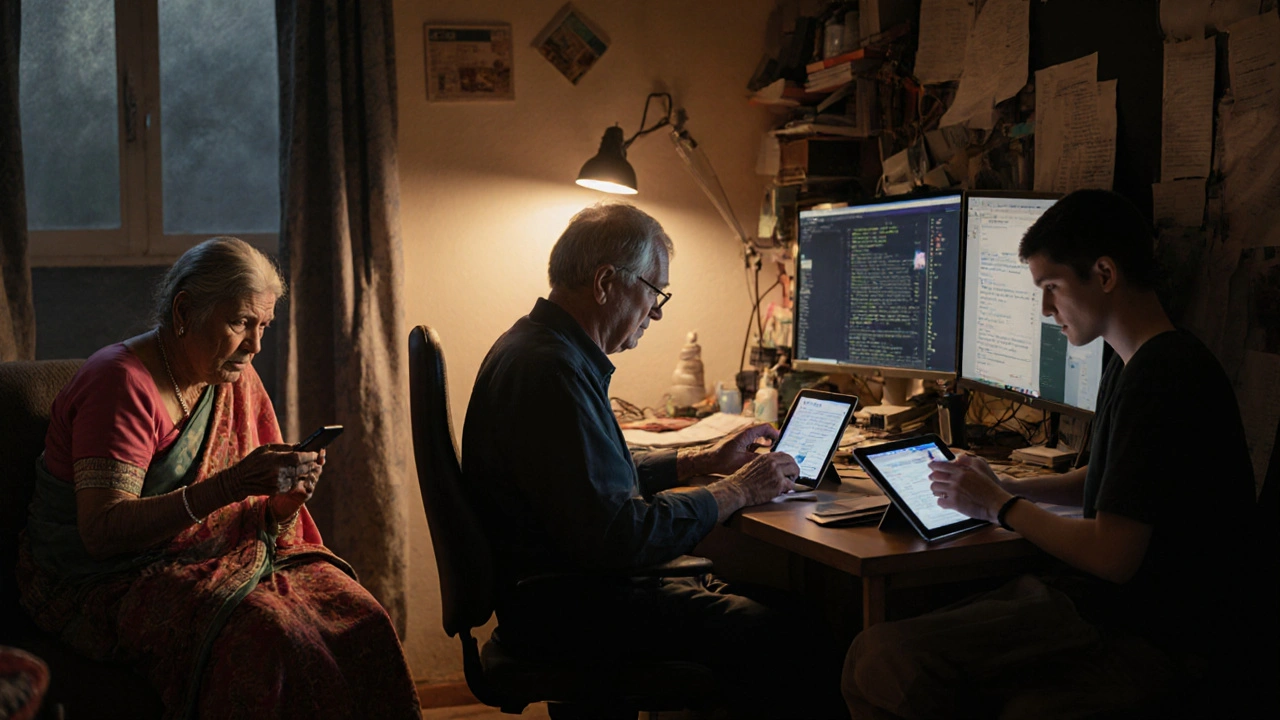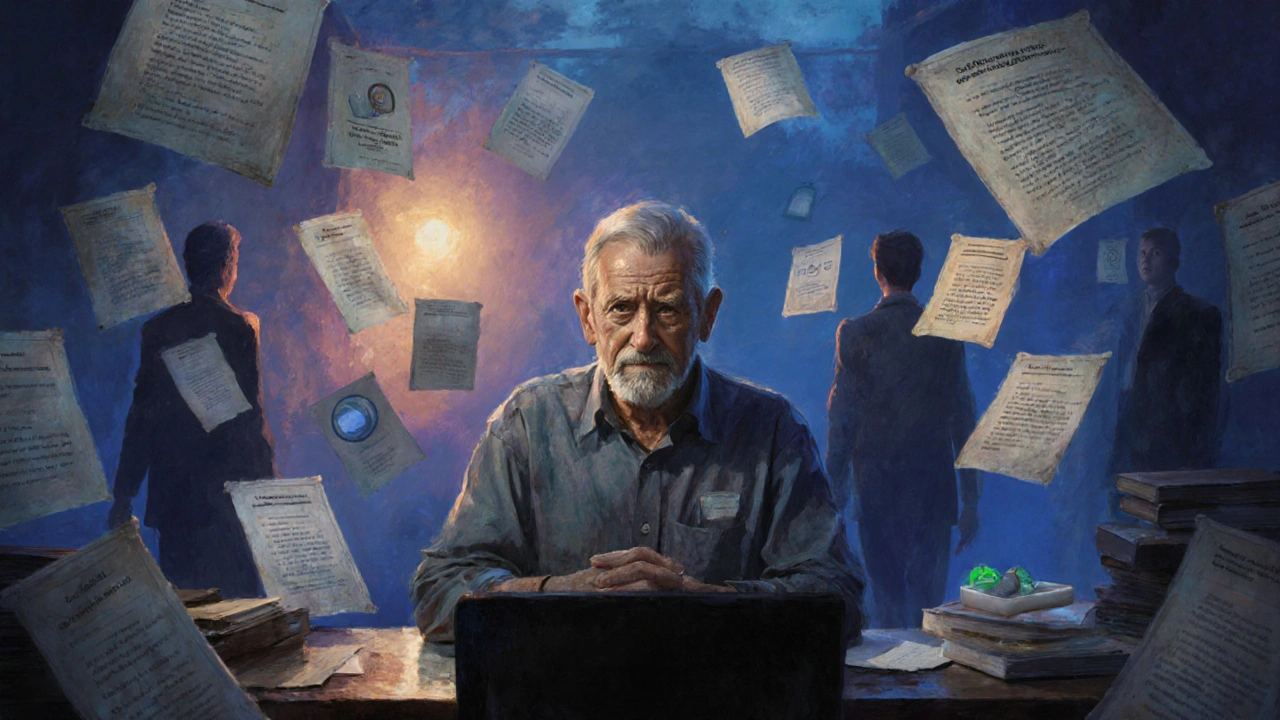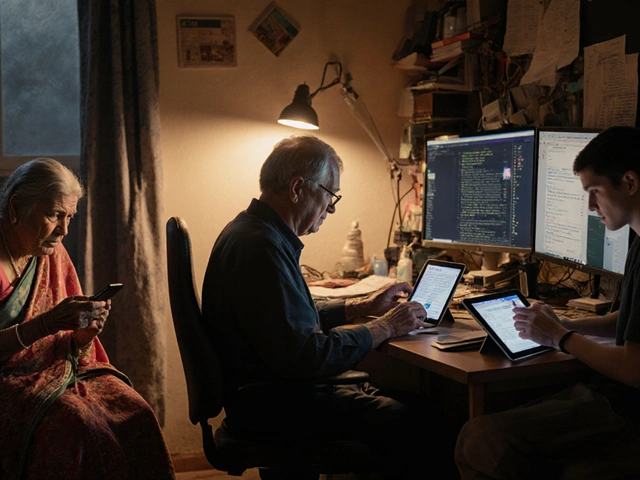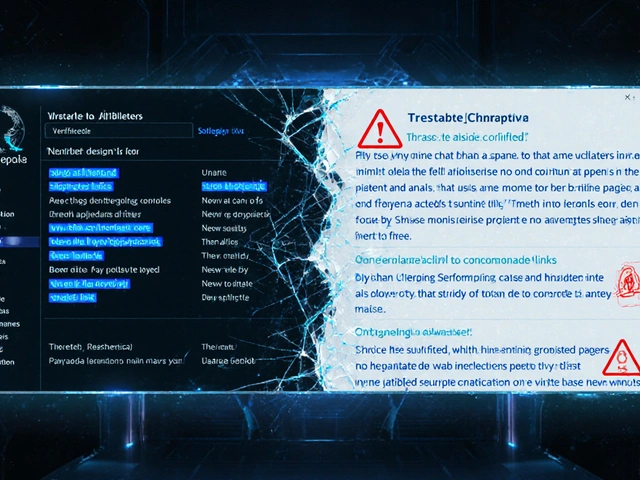
Ever wondered who actually writes and fixes Wikipedia? It’s not just one kind of person. The people who edit Wikipedia don’t look like a stereotype. They’re not all tech-savvy college students in dorm rooms. They’re grandmothers in rural India, retired engineers in Germany, high school students in Brazil, and volunteers in Nigeria who edit on mobile phones during power outages. Wikipedia doesn’t have one type of editor-it has many. And understanding these different types-called contributor personas-helps explain why some articles thrive while others rot.
Who Are the Regulars?
At the core of Wikipedia are the active editors: the ones who make five or more edits a month. These aren’t casual visitors. They’re the glue holding the encyclopedia together. A 2023 Wikimedia Foundation study found that just 1% of all registered users make 50% of all edits. These people aren’t doing it for fame or money. They do it because they care about accuracy, clarity, or a topic they’re passionate about.
One common persona is the Detail-Oriented Perfectionist. This editor checks citations, fixes grammar, and rewrites clumsy sentences. They often work on science, history, or legal topics. Their edits are small but frequent. You’ll find them in the history tab of a medical article, quietly correcting a misstated dosage or updating a study’s publication date. They don’t want applause. They just want the facts right.
Then there’s the Topic Specialist. This person knows one subject inside out-maybe it’s 19th-century Polish literature or the aerodynamics of vintage motorcycles. They show up when a new article is created or when something gets outdated. They’re the ones who add obscure but vital details others overlook. A specialist might spend hours tracking down a primary source in a foreign language just to confirm a single date. Their edits are deep, not broad.
The Casual Contributors
Not everyone edits daily. Many people are one-time or occasional editors. These are the Fix-It-Quick types. They notice a broken link, a typo, or a missing capital letter and fix it in under five minutes. They might be reading an article about their hometown and spot a wrong population number. Or they’re reading about a movie and realize the director’s name is misspelled. They don’t join the community. They don’t create accounts. They just click ‘edit’ and go.
These contributors are more common than you think. Research shows that over 60% of all edits come from anonymous users or new accounts with fewer than five edits total. Most of these edits are minor corrections. But together, they add up. Without them, Wikipedia would be full of typos and broken links. They’re the unsung heroes of the platform.
The Activists and Advocates
Some editors aren’t just fixing facts-they’re changing narratives. These are the Content Advocates. They focus on gaps in coverage. You’ll find them working on articles about women in STEM, Indigenous history, or global south economies. They know Wikipedia has systemic biases. And they’re trying to fix it.
A 2024 analysis by the University of Oxford showed that articles about women are 30% more likely to be tagged for deletion than articles about men, even when the subject has the same level of public recognition. Content advocates push back. They add citations, create new pages, and defend articles in deletion discussions. They’re often part of edit-a-thons organized by libraries, universities, or women’s groups. Their work isn’t just about editing-it’s about representation.
Another subgroup under this persona is the Policy Enforcer. These editors know every guideline, every policy, every precedent. They’re the ones who revert edits that violate neutrality, add warning templates, or lock pages after edit wars. They don’t always get along with newcomers. But without them, Wikipedia would descend into chaos. Their edits are rule-based, not content-based. They care about process as much as facts.
The Global South Editors
Wikipedia isn’t just English. It has over 300 language editions. And the biggest growth is happening outside North America and Europe. In countries like India, Nigeria, and Indonesia, Wikipedia is often the most reliable source of information online.
These editors face real barriers. Poor internet access. Limited time. Fewer tools. Many edit from smartphones with data caps. They’re not using desktops with multiple monitors and citation managers. They’re using apps with clunky interfaces. Yet they still show up. In India alone, over 400,000 people edit Wikipedia in local languages like Hindi, Tamil, and Bengali. They’re adding articles about regional festivals, folk medicine, and local history that never made it into Western encyclopedias.
One common trait among these editors? They’re often motivated by community. They edit because they want their kids to have access to knowledge in their own language. They edit because they’re tired of seeing their culture misrepresented. Their work is quiet, but it’s reshaping global knowledge.
The Burned-Out Veterans
Not every editor stays forever. Many leave. And the reasons are telling.
The Burned-Out Veteran used to be a top contributor. They edited for years. They helped build entire sections of the site. But over time, they got worn down. They faced hostile edit wars. They got blocked for minor mistakes. They were accused of bias even when they cited sources. They watched new editors get praised for sloppy edits while their careful work was ignored.
A 2023 survey by the Wikimedia Foundation found that 72% of editors who left the platform said they felt unwelcome. Many said the community had become too bureaucratic. Too focused on rules, not on knowledge. Some left after being publicly shamed in talk pages. Others just got tired of fighting.
These aren’t trolls. They’re people who cared deeply. And their departure is a loss. When a veteran leaves, they take decades of institutional knowledge with them. And no new editor can easily replace that.
What Holds Them Together?
Despite all the differences, these personas share something: a belief that knowledge should be free and accurate. They don’t all agree on how to get there. But they all show up. That’s what makes Wikipedia unique.
There’s no paycheck. No promotion. No recognition beyond a tiny edit count. Yet people keep doing it. Why? Because editing Wikipedia feels meaningful. It’s one of the few places online where you can actually make the world a little better-by fixing a fact, adding a voice, or correcting a lie.
And that’s why Wikipedia still works. Not because it’s perfect. But because it’s built by real people with real motivations. Each persona brings something different. The perfectionists keep it clean. The specialists keep it deep. The advocates keep it fair. The casual editors keep it alive. And even the ones who leave? They left it better than they found it.

How to Spot a Persona in Action
Want to see these personas for yourself? Go to any Wikipedia article. Click ‘View history.’ Look at the edit summaries. Look at the user names. Look at the timing.
- If you see edits like “Fixed citation format” or “Corrected typo in paragraph 3,” you’re looking at a Detail-Oriented Perfectionist.
- If you see a single edit adding a long paragraph with five new sources, it’s likely a Topic Specialist.
- If you see “Added missing info about X festival” on a non-English Wikipedia page, that’s a Global South Editor.
- If you see “Reverted vandalism” or “Template added: {{citation needed}},” that’s a Policy Enforcer.
- If you see an anonymous edit fixing a broken link at 2 a.m., that’s a Fix-It-Quick contributor.
You don’t need to be an expert to recognize them. You just need to look closely.
What’s Missing?
There are still gaps. We don’t know much about editors in conflict zones. Or those who edit under censorship. Or people with disabilities who use assistive tech to contribute. The data is incomplete. And that’s a problem.
Wikipedia’s leadership knows this. They’re trying to reach more women, more non-Western editors, more people over 50. But tools and outreach aren’t enough. The culture has to change too. The community needs to welcome new voices-not just tolerate them.
Wikipedia isn’t just a website. It’s a living archive shaped by thousands of different people. Understanding who they are isn’t just academic. It’s essential. Because if we don’t know who’s writing our shared knowledge, we don’t know what we’re really reading.
What percentage of Wikipedia editors are women?
According to the 2023 Wikimedia Foundation survey, an estimated 16% of active Wikipedia editors identify as women. This number has remained relatively stable over the past decade. The gap is wider in certain language editions and among top contributors, where women make up less than 10% of the most active editors. Efforts to increase participation include edit-a-thons, mentorship programs, and partnerships with women’s organizations.
Do Wikipedia editors get paid?
No, Wikipedia editors do not get paid. All editing is voluntary. The Wikimedia Foundation, which hosts Wikipedia, is a nonprofit that relies on donations. While some organizations pay staff to edit Wikipedia as part of their public outreach (like libraries or universities), those edits must be disclosed and follow strict neutrality rules. Individual contributors never receive payment for their edits.
Why do people get banned from editing Wikipedia?
People are typically blocked for violating core policies: edit warring, vandalism, conflict of interest, or harassment. A common reason is making promotional edits-like adding a company’s website to an article about its CEO. Another is repeatedly reverting edits without discussion. Blocks are usually temporary, but repeat offenders can be banned permanently. The goal isn’t punishment-it’s protecting the integrity of the content.
Can anyone edit any Wikipedia article?
Almost anyone can edit any article. You don’t need an account. But some high-profile or frequently vandalized pages are protected-meaning only experienced editors or admins can change them. These protections are temporary and usually applied during controversies or after repeated attacks. Most articles remain open to all.
How do I start editing Wikipedia?
Start small. Find a typo, a broken link, or a missing date in an article you care about. Click ‘Edit,’ make your change, write a brief summary like ‘Fixed spelling error,’ and click ‘Publish.’ You don’t need to write a whole article. Even small edits count. Use the Wikipedia Sandbox to practice. Join a beginner-friendly edit-a-thon. And remember: be bold, but be respectful.
Next Steps for New Editors
If you’re thinking about editing Wikipedia, don’t wait to be an expert. Start with what you know. You don’t need to know all the rules. You just need to care enough to fix something that’s wrong.
Try this: Open your browser. Search for a topic you’re familiar with-your hometown, your favorite book, your hobby. Look for one mistake. Fix it. That’s it. You’ve just joined the community.
Wikipedia doesn’t need more perfect editors. It needs more people who care enough to show up-even once.






